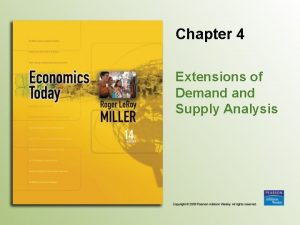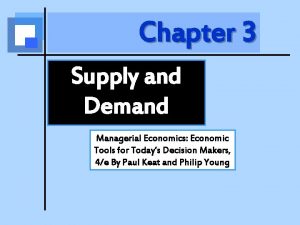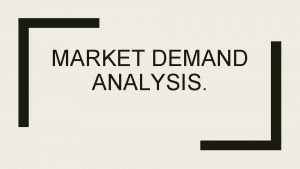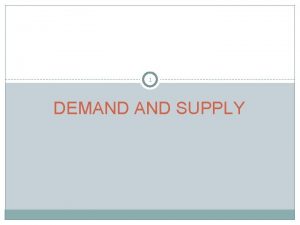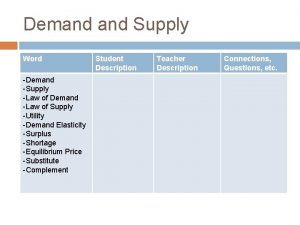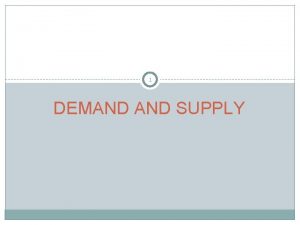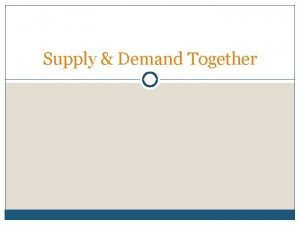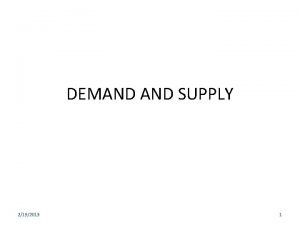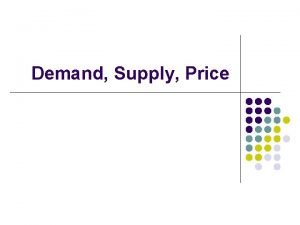Supply Demand Analysis PART A Agricultural Marketing Agricultural












- Slides: 12

Supply & Demand Analysis PART A Agricultural Marketing Agricultural Economics 364 Joey E. Mehlhorn, Ph. D.

Changes in Demand & Supply Curves The demand supply curves show the responses of buyers and sellers to changes in prices, everything else being equal. These curves can shift in position— a change in demand or a change in supply.

Factors That Shift Demand Curves: • Change in the number of buyers. • Change in incomes or purchasing power. • Change in tastes and preferences.

Factors That Shift Demand Curves: • Change in the prices of related products. • Change in expectations of buyers as to future levels of prices. • Changes in marketing costs, shifting derived demand.

Factors That Shift the Supply Curve: • Short-run: – Storage costs. – Change in financial conditions. – Expectations about future prices.

Factors That Shift the Supply Curve: • Long-run: – Costs of production. – Relative prices. – Technology.

Elasticity Buyers and sellers often want to know by how much will quantity respond to changes in price. Price elasticity is a measure of the responsiveness of quantity supplied or demanded to changes in price.

Elasticity

Elasticity Ep > |1| Elastic Ep = |1| Unitary Ep < |1| Inelastic

Elastic • A 10% change in the price leads to a greater than 10% change in the quantity supplied or demanded. Example: E(demand)=-1. 23 A 10% increase in the price would lead to a 12. 3% decrease in the quantity demanded.

Unitary Elasticity A 10% change in the price leads to a 10% change in the quantity supplied or demanded. Example: E(supply)=1. 00 A 10% increase in the price would lead to a 10% increase in the quantity supplied.

Inelastic A 10% change in the price would lead to a less than 10% change in the quantity supplied or demanded. Example: E(demand)=-0. 27 A 10% increase in price would lead to a 2. 7% decrease in quantity demanded.
 Module 5 supply and demand introduction and demand
Module 5 supply and demand introduction and demand Matching supply with demand
Matching supply with demand Supply analysis
Supply analysis Ap macroeconomics supply and demand analysis
Ap macroeconomics supply and demand analysis Extensions of demand and supply analysis
Extensions of demand and supply analysis Demand and supply in managerial economics
Demand and supply in managerial economics Demand analysis marketing
Demand analysis marketing Agriculture marketing process
Agriculture marketing process Agricultural marketing circle
Agricultural marketing circle Scope of agricultural marketing
Scope of agricultural marketing Marketing mix of agricultural products
Marketing mix of agricultural products Inventory modeling
Inventory modeling Deficient demand and excess demand
Deficient demand and excess demand




